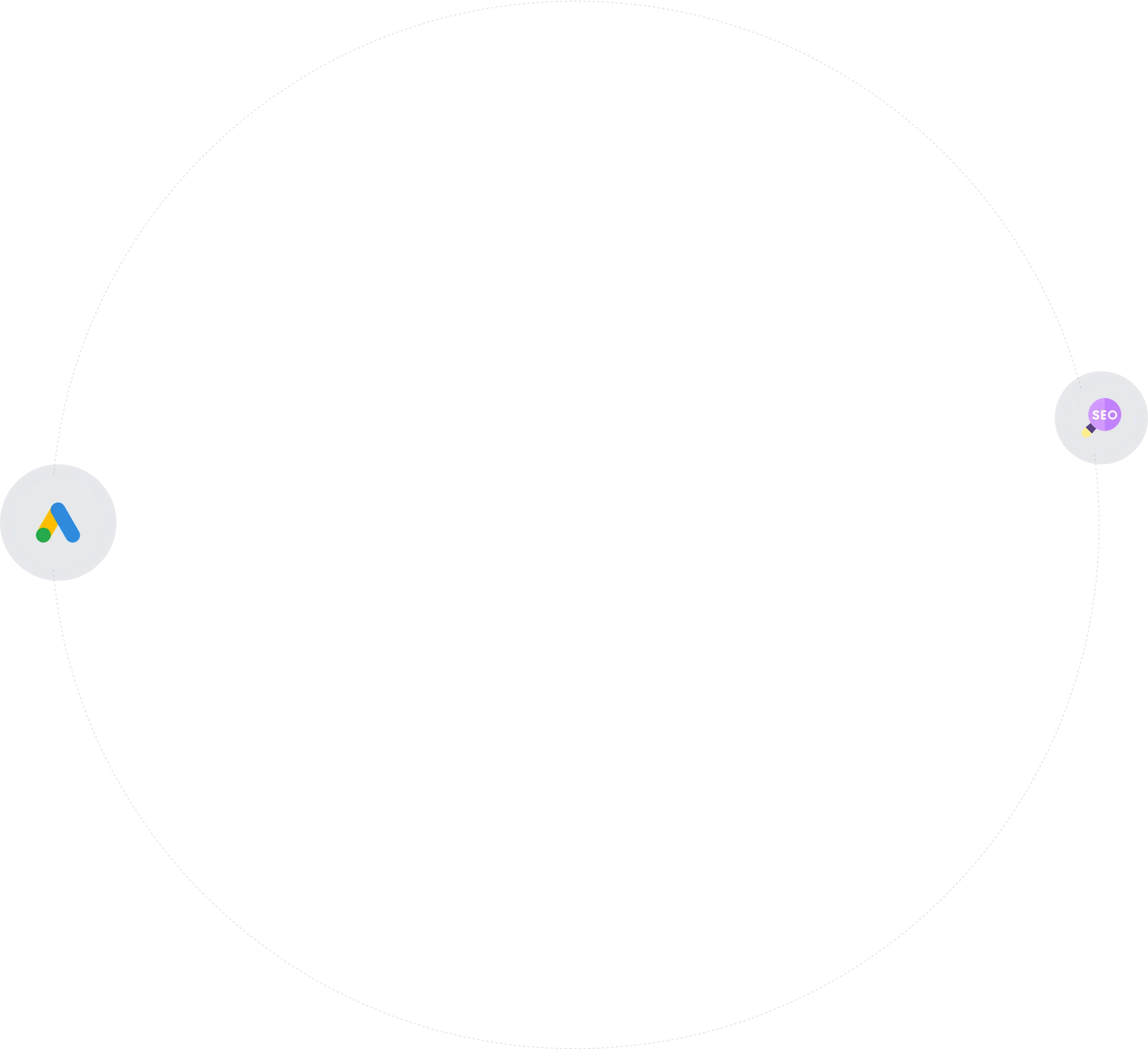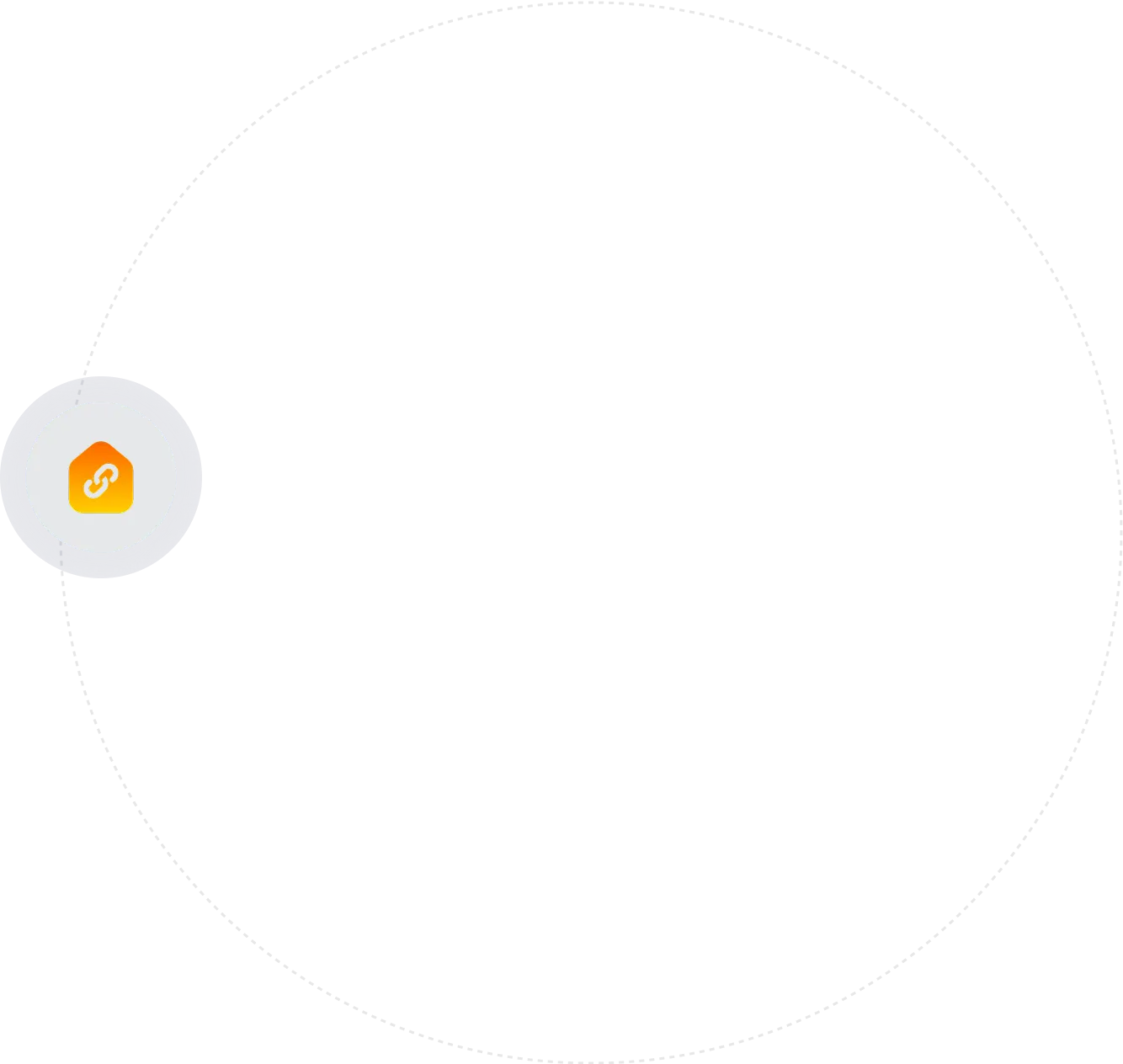
EEAT — Experience, Expertise, Authoritativeness, Trustworthiness: How to take your SEO to a new level
.png)

.webp)
.jpg)
The most important facts in a nutshell






.webp)

Then now is the right time! Together we will turn your website into your strongest sales channel - with a clear strategy and measurable growth.
Get free adviceRegardless of whether you run a medical practice, a financial blog, legal advice or an e-commerce shop: If you make trust, expertise and quality visible, you benefit from better rankings, more visibility and long-term success in organic search with the E-E-A-T principle. And if you're already working on SEO, you've certainly stumbled across the term, sometimes just advertised as EAT or EEAT. But what is really behind it?
What does E-E-A-T stand for?
The abbreviation E-E-A-T stands for:
- Experience (Experience)
- Expertise (expertise)
- Authoritativeness
- Trustworthiness (trustworthiness)
This is an evaluation concept that Google uses as part of its Search Quality Evaluator Guidelines to better assess the quality of content, websites and their authors. It is therefore not an algorithm or a direct metric, so you won't find an “EAT Score” in the Google Search Console. E-E-A-T is more of a comprehensive quality principle that runs across the entire website, from content to authors to company presentation. Why the whole thing? Because Google wants to make sure that, particularly when it comes to sensitive topics, the so-called YMYL content (“Your Money or Your Life”), no misinformation is spread that could have real negative effects on users' lives.
Why Google introduced EEAT
Imagine yourself googling for “heart attack symptoms” and the first thing you get is a clickbait article from a dubious site with half-baked information. Creepy, isn't it? That is exactly what Google wants to prevent. The Group has also been under external pressure for years to ensure the quality of search results, especially in times of fake news, content generated by AI and content farms that only want clicks. The Google Quality Rater Guidelines, i.e. the handbook for human quality testers, were therefore supplemented early on with the topic E-A-T, which was later expanded to E-E-A-T. Although these guidelines do not directly help with ranking, they form an understanding of what content Google regards as high-quality.
The aim is to rank websites that provide reliable, well-founded and well-presented information, while unqualified, manipulatively prepared or non-transparent content loses visibility. EEAT is particularly effective in so-called core updates, Google's major algorithm adjustments, which have been hitting or rewarding websites on a recurring basis since 2018. It not only looks at the lyrics themselves, but also at:
- Who is the author?
- What experience does he have?
- Is the site trustworthy?
- Are there any external sources that confirm the authority?
The answers to these questions will therefore sometimes determine whether your website will end up on page 1 or on page 10 in the future.
The four pillars of EEAT in detail
In the following sections, you will find out what the individual E-E-A-T components mean, why they are decisive for your visibility and how you can strengthen them in a targeted manner, of course with many practical examples and specific tips for action.
Experience: Why your experience counts
The point here is that the author of a content actually has his own experience with the topic. In other words, not just theory or read knowledge, but experienced, experienced practice. Remember: Google wants real content from real people, not AI aggregates or Wikipedia copies. So if you're writing about a product, for example, you should have used it. If you give instructions, you should have tried them yourself. Other examples of content with a high level of experience include:
- A dentist explains from his own practice how to care for dental implants.
- A tax advisor gives tips from everyday life at a law firm on advance sales tax returns.
- A travel blogger reports first-hand about traveling with an e-bike in Norway.
What else can you do specifically to substantiate your experience:
- Work with testimonials, case studies, screenshots, and videos.
- Avoid staying purely theoretical, but show that you know what you're talking about.
- Use authentic language
Especially when it comes to sensitive topics (see Your Money or Your Life), this factor counts twice. If you are traveling in a medical, financial or legal context without being affected or experienced yourself, this can quickly have a negative impact if noticed by Google.
Expertise: Making well-founded knowledge visible
Experience alone is not enough; you also need professional depth. Google wants to know: Do you really know what you're talking about? Or are you just parroting on what others are saying? However, expertise is not only reflected in academic titles, but also in well-structured, fact-based, helpful content. Author pages, author boxes with CVs, mentions on specialist portals or co-authorships in recognized media can also underline your expertise. What Google finally wants to see:
- Who are you And why should you be allowed to say something about this topic?
- Is your expertise also recognized externally (e.g. through backlinks, mentions, studies)?
- Is your content accurate, helpful, and comprehensive?
And this is what it can look like in practice:
- Add an author description with qualifications to each article.
- Link to certificates, studies, trainings, lectures, publications.
- Build content structures that underline your expertise: comparisons, tables, study evaluations.
An example: An online shop for dietary supplements can demonstrate its expertise, for example, by publishing blog articles from certified nutritionists with source references and author box.
Authoritativeness: How do you become an authority in your subject area?
Authority doesn't arise overnight, but it is one of the most important factors for long-term ranking in terms of E-E-A-T and the Google Quality Rater Guidelines. After all, Google wants to show content from those who are considered a recognized source in their field. What does that mean in this case? For example, if you publish an article about tax law, but there are no references, mentions or other traces of your professional role online, you will not be perceived as an authority. Even if the article is technically correct. Google uses many factors to evaluate, including:
- Backlinks from reputable sites
- Mentions in press, blogs, specialist portals
- Quotes from other experts
- Reputation signals on platforms such as LinkedIn, Trustpilot, ProvenExpert
This is also where the so-called E-A-T score (colloquially) applies: Although there is no publicly available value, Google's internal systems certainly rate how “trustworthy” and “recognized” you are or not. High page quality is also the result of authority.
So what you can actually do:
- Present yourself as an industry leader through press releases, specialist articles and conference appearances.
- Ensure off-page SEO and specifically try to get high-quality backlinks from trustworthy sites.
- Develop your digital identity, for example through a LinkedIn profile, about pages, expert interviews, or YouTube appearances.
An example: As an agency managing director, it is particularly important that your name is linked to your company, e.g. through guest articles, industry contributions or statements in specialist media. But your company itself also needs authority. In fact, an established brand also counts as an entity at Google. The more often your company name appears with positive contexts, the sooner Google recognizes you as a relevant player and this in turn has an effect on your visibility.
Trustworthiness: Trust is the currency on the Internet
If users don't trust you, Google won't trust you either. And that is no exaggeration. Trustworthiness, or in English: trustworthiness, is one of the central EEAT pillars. It decides whether users buy from you, book an appointment or just drop out. Especially with Your Money or Your Life sites, the demand for trust is particularly high. So if you work in an area that has an impact on health, finances, law or safety, you should be extremely transparent at all times. After all, trust in the digital space has many dimensions:
- Do I trust what this site says?
- Do I trust the people who write there?
- Do I trust technical security (e.g. HTTPS, GDPR)?
- Do I trust the brand/company as a whole?
What you should therefore do specifically:
- Impressum & data protection: complete and easy to find
- HTTPS encryption, an absolute must!
- Transparent information about authors, companies, services
- Customer reviews, seals of approval, test results
- Detailed FAQ and help pages
But trust also comes from consistency. Your content, your brand image, your user interface, everything should therefore be made from a single source. When users notice: “You know what you're doing here,” they stick around and come back. And Google itself also scans for such signals. Pages with little transparency, hidden information or lurid content without sources lose visibility, at the latest with the next core update.
EEAT vs. other SEO concepts: What EEAT is not
Many people think of E-E-A-T as just another tool in their SEO kit. But that falls short. EEAT is not a plug-in, not a keyword density formula, not a simple trick, but a comprehensive quality concept that includes technical as well as content-related, organizational and reputational measures.
What EEAT is not:
- Not a technical ranking factor in the traditional sense
- Not a quick SEO shot
- No substitute for good content
It is therefore more of a philosophy that must run through the entire website. EEAT is not just content, but combines content marketing, author status, off-page reputation, user experience and trust signals into a holistic construct. A good example of this: You can write the best text about private health insurance, but if you don't offer any references, no presentation of authors, no references and no clear company page, Google will hardly trust you. Especially not in a YMYL context.
EEAT and the Search Quality Evaluator Guidelines
The famous Search Quality Rater Guidelines are considered an unofficial Bible for anyone who wants to know what really matters to Google. And this is exactly where EEAT plays a central role. The guidelines describe in detail how human reviewers should rate websites and what role EEAT plays in this. And even though the evaluation criteria are not directly responsible for the ranking, they are incorporated into the training of Google algorithms. So you can think of it as a kind of quality checklist that you can use to check your site for page quality, trust, content depth, and presentation. Some of the most important elements according to the guidelines include:
- Who is the author? Is their expertise discernible?
- What is the experience, does someone write first-hand?
- Does the page have a clear structure and a clean table of contents?
- Are sources linked, statements substantiated?
- Is there a clear goal for the article?
On-page optimization for experience and expertise: How to optimize your website for EEAT
If you want to put EEAT into practice, you first have to start on your own site. The basis for this is on-page optimization, specifically for experience, expertise and authoritativeness. First, this step is about designing your content in such a way that it not only provides information, but also reflects real practical experience. You can do this, for example, by:
- Author boxes with resume, professional experience, qualifications
- Personal testimonials, studies, case studies
- Interactive elements such as images, infographics, how-to videos
- Structured content with table of contents and sub-headings
The key: expert profiles. For example, if you write an article about implants as a dentist, it should be immediately visible that you wrote this article as a licensed specialist. Your professional experience, continuing education, lectures or specialist articles also count here. This is on-page SEO, which has a direct impact on your E-E-A-T rating. In particular, extensive pages with many categories or services (e.g. tax advice, coaching, medical treatment) should therefore individually upgrade each service page with relevant information, references and elements of trust.
Offpage measures for authority and trust
Good content alone is not enough; it must also be recognized as relevant from outside. This is exactly where the off-page measures come in. When other reputable sites link to you or quote you, Google is signaling that you are an authority in your field. Specifically, you can increase your authoritativeness and trustworthiness with the following means:
- High-quality backlinks from topic-relevant websites
- Mentions in specialist portals, industry pages or news portals
- Guest posts on other blogs, preferably with an author profile
- Participation in industry events, podcasts, webinars
- Positive reviews on Google, ProvenExpert, Trustpilot
Traditional PR work also helps here: Press releases, interviews, technical contributions or awards increase your external perception. This in turn is reflected in SEO signals, which directly influence E-E-A-T. An example: You run a website about alternative healing methods. When the “Apotheken Umschau” mentions you in an interview and links to your articles, that is a strong sign of your expertise, regardless of whether you have a doctorate or not. Another topic is brand development. Google is increasingly recognizing brands as entities and evaluating them in connection with content. So the more your brand is linked to experience, expertise, authority, the more robust you become when it comes to algorithm changes.
Technical SEO to support EEAT
Even though technical aspects (part of on-page optimization) are not directly part of the EEAT definition, they support the perception of your site. Important measures include in particular:
- HTTPS encryption for trust
- Fast load times, ideally less than 2 seconds
- Mobile First Design
- Structured data (schema markup) for authors, organizations and articles
- Canonical tags, clean URL structures, crawl optimization
You can also find detailed tips and further information on the technical optimization of your website in our Onpage SEO checklist.
EEAT and YMYL: When it really counts
As already mentioned, the term Your Money or Your Life (YMYL) is a categorization of content that, according to Google, is particularly sensitive because it can have a direct impact on users' lives. YMYL topics include:
- Medical information (e.g. symptoms, treatments, medications)
- Financial advisors (e.g. tax advice, investment tips, insurance)
- Legal content (e.g. contracts, legal assessments)
- Security issues (e.g. emergencies, data protection, online fraud)
So when you publish content in these areas, you are subject to stricter quality requirements. Google not only wants other sites, but also expects visible experience, expertise and trustworthiness in addition to accuracy of content.
Why Google rates YMYL particularly strictly
The reason is obvious: A bad article about “diabetes drugs” can endanger people's lives. Incorrect financial advice can ruin livelihoods. For this reason, any weakness in the EEAT profile is rated particularly negatively when it comes to YMYL topics. Practical EEAT measures for YMYL sites are therefore:
- Clear authorship with qualifications and professional background
- External sources, studies, medical guidelines or legal texts
- Well-structured content with table of contents and sources
- Transparent presentation of the company including imprint and data protection
- Information about risks, alternative views, references to experts
A case study from SEO practice: A health blog loses 80% of its visibility after a Google Core update. Why There is a lack of author information, the articles are vaguely worded, and medical statements are not substantiated. After the relaunch with new author boxes, source references and structured processing, traffic is increasing significantly again.
Case studies: High-quality content with authority for strong EEAT optimizations
Let's now assume that you run an online shop for vegan dietary supplements. In today's market, it is no longer enough just to provide a few product descriptions and nice pictures. In order to survive at Google, particularly in the sensitive health segment, you need a clear profile of experience, expertise and trustworthiness. An optimal EEAT-optimized shop could therefore look like this:
- Products with scientifically proven active ingredients
- Detail pages that are not just “sales texts” but offer real content: e.g. “How does magnesium citrate really work? ”, written by a nutritionist
- Author profile directly on the product page: “Article written by Dipl. oec. troph. Max Mustermann, over 12 years of experience in clinical nutrition”
- Certifications and studies directly integrated
- Reviews with medical comment: “This assessment does not replace a medical diagnosis”
Supplemented with a blog that deals specifically with topics such as “vitamin D in winter” or “micronutrients for vegans,” which is always described and edited by real experts, your chances of getting better rankings will certainly increase.
Service providers: How trust is built
If you are a service provider, such as a tax advisor, coach, lawyer or dentist, then the same EEAT rules apply to you, but they apply differently. The content must not only be technically correct, but also approachable, trustworthy and transparent. An example: A tax advisor not only offers the usual service pages (“Our Services”), but also goes deeper:
- “Sales Tax in E-Commerce” guide with real case studies
- Video tutorials from the managing director himself
- Author profile with CV: “Max Mustermann: tax consultant with 18 years of professional experience, specialist author and lecturer at the VHS Cologne”
- Link to interviews in Handelsblatt, guest contributions on haufe.de
- Trust signals such as customer reviews, seals, Google reviews
Expertise, clarity and personality combine to create the quality that Google is looking for. However, each individual page must reflect the principles of EEAT.
B2B and SaaS: Expert status through content
EEAT is often underestimated, particularly in the B2B segment. Especially here, targeted content marketing can be used to build up a strong EEAT profile, primarily through expertise and authoritativeness. Let's take a company that offers a SaaS solution for logistics processes as an example:
- The site not only offers product information, but also an extensive knowledge center with guidelines on topics such as “Track & Trace” or “Supply Chain Management”
- Articles are written by internal developers, logistics experts or project managers with bio, LinkedIn link and citations
- White paper with study results derived from real practical experience
- Case studies that document real customer projects
With this strategy, you not only achieve rankings, but also leads, especially since trust and expertise often count more than price or features, especially in B2B.
Measure and evaluate: With these indicators, you can see a good EEAT score
While there is no official EEAT score, you can use a few key performance indicators to determine fairly precisely whether your optimizations are bearing fruit:
- Increasing rankings for information-driven keywords
- Higher CTR in Google Search Console
- Longer time spent on your pages
- Decreasing bounce rates
- More backlinks from high-quality sources
- More mentions of your brand on social media or forums
Qualitative signals must also be taken into account, such as:
- Are your readers specifically asking for more content from specific authors?
- Are you getting more interview requests, guest post requests, or press inquiries?
- Is your content cited by other sources?
If you want to measure this, we recommend tools such as Google Search Console (for impressions, clicks, CTR, rankings), Ahrefs or SEMrush (for backlinks, brand mentions), Surfer SEO (for content structure and keyword usage) and Brand24, Mention or Talkwalker (for brand monitoring).
EEAT as part of your SEO strategy: sustainable integration into the content marketing process
EEAT only works if you anchor it as an integral part of your SEO strategy and content marketing. And that starts with a plan:
- Conduct a content audit: Which sites already meet EEAT criteria? Where is author information, sources or structure missing?
- Adjust editorial plan: In future, only publish content that follows a clear EEAT strategy.
- Build up a pool of authors: Expert authors, practitioners, managing directors or guest authors who provide real insights.
- Define processes: Who checks content for plausibility, structure, facts?
But don't just think of blog articles. Category pages, service pages, or information sections can and should also be EEAT-optimized. The more pages on your domain comply with these principles, the stronger your EEAT foundation.
1. Conduct a content audit: Where does your website stand in terms of EEAT?
Before you can establish EEAT as a strategic part of your SEO and content measures, you need to know which content is already trustworthy and where optimization is needed. A content audit is the first, indispensable step for exactly this. However, an EEAT-focused content audit goes far beyond classic SEO checks. You not only check keywords and rankings, but also:
- Is an identifiable author responsible for the content?
- Is specialist knowledge (expertise) recognizable, for example through qualifications, professional experience or insights from practice?
- Does the text contain authentic experiences that show that the author knows what he is talking about?
- Is the information backed up by sources, studies, citations or case studies?
- Is the text particularly sensitive (Your Money Your Life), e.g. when it comes to medical, financial or legal topics, and does it meet particularly high standards of trust there?
Typical weak points that you can identify in an audit are often:
Authorship: No author, no bio, no context
Recommendation: Insert author box with picture, name, qualifications
Sources & evidence: General statements without evidence
Recommendation: add studies, scientific articles, citations
structure: No common thread, bad structure
Recommendation: Use H2/H3 structure, tables of contents
Your Money Your Life: Content without expert review
Recommendation: Introduce technical control by industry experts
Such an audit usually also helps you to set priorities, i.e. to identify which pages need to be revised immediately, which content should be strengthened and which is already solidly established.
2. Adjust the editorial plan: Establish EEAT as a quality standard in the content process
The next step is structural integration into your workflow. EEAT must become part of your editorial plan, not as a “special case” but as a basic requirement for every piece of content. So instead of just planning topics and keywords, expand your editorial plan to include EEAT-relevant criteria. This ensures that it is clear which elements should be incorporated to increase trustworthiness even before the text is created. An EEAT-oriented editorial plan should include the following:
- Target group & intention: Who do you want to reach and with what added value?
- Topic & keyword set: Focus keyword + semantically related terms
- Content type: e.g. expert interview, experience report, guidance
- Responsible author: With verifiable expertise and/or experience
- Documents & sources: What is linked or referenced?
- EEAT focus: Author box, studies, quotes, real experience?
This planning ensures that your content has substance right from the start and doesn't have to be “trimmed for EEAT” afterwards.
3. Build up an author pool: Make experience & credibility visible
Google doesn't want “anonymous texts from anyone” anymore. In the best case scenario, you should therefore specifically build up a pool of authors with real experience and/or verifiable qualifications (this could include you and selected employees). At this point, we are happy to recommend:
- Professionals in the company: Get experts from specialist departments involved, such as HR management, a doctor in the team, or the founder himself.
- External copywriters with specialization: Search specifically for copywriters with industry experience. They understand the language of your target group and deliver well-founded content.
- Guest authors & partners: Guest posts from recognized people strengthen your authority and can generate backlinks and reach at the same time.
- Author transparency: Each post should include an image, short biography, and, if applicable, a link to the LinkedIn profile or publications.
An EEAT-compliant author profile always includes:
- Name and function (e.g. “Dr. med. Mara Mustermann, specialist in dermatology”)
- One to two sentences of qualification or experience
- Link to further contributions or external author page
- Note of responsibility for content (“This article was written by...”)
You can usually easily bundle this information centrally in a “team” or “author” area.
4. Define processes: EEAT as part of editorial quality assurance
The best strategy is useless without proper implementation. That's why you should define clear editorial processes that incorporate EEAT principles from start to finish, not only for blog articles, but also for category pages, service descriptions, advice content, and all other content formats that represent your brand to the outside world. An EEAT-enabled content process could look as follows:
1st briefing phase
- Target group focus: Who do you want to reach, what expectations and previous knowledge does your target group have?
- Understanding search intent: What exactly does the user want to know, do, or solve?
- Integrate EEAT requirements: Should an expert write? Is there any experience that should be incorporated? Which sources are permitted or even mandatory?
- Clarify responsibilities: Who writes the lyrics? Who reviews it on a professional level? Who is ultimately responsible for the content?
2. Copywriting
High-quality content with a strong EEAT profile has the following features:
- It goes into depth: At least 800 to 1,000 words, depending on the topic
- It is structured: H2/H3 subheadings, table of contents, lists, lists, tables, FAQs
- He has a clear author identity: Who wrote the text? What qualifications and personal experience does the person have?
- It is based on real experiences or case studies
- It contains fact-based statements backed by sources
3. Technical review
This primarily involves measures such as:
- A second look from experts: Particularly in the case of YMYL topics (health, finance, law), the content should be checked by a professionally qualified person before publication.
- Fact check: Are the data, wording and conclusions correct?
- Check comprehensibility: Is the content easy to understand even for laypeople or target groups with little previous knowledge?
4th SEO final
So that your site is not only Eeat-friendly in the end, but also ranks well, you should also optimize your content for search engines. This includes:
- Check on-page factors: keyword placement, meta tags, alt texts, headline structure
- Ensuring technical quality: loading time, mobile optimization, clean URL structure, structured data (schema.org)
- Include internal linking: On thematically related pages or further content
- Final check eEAT elements: Author box, references, transparent information on responsibility
5. Release & maintenance
The text is ready? Perfect Then you can publish it now. But it doesn't stop there. It takes a little more to rank for a long time. After publication, the most important tasks that have a positive effect on your rankings include:
- Maintain author profiles: Include new publications, update positions and add links to external profiles.
- Regular content update: Updates are important, especially when it comes to dynamic topics, in order to maintain trust and visibility.
- Track performance: Analyze rankings, bounce rates, length of stay, and engagement with content.
- Get user feedback: In particular, comments, feedback, reviews can help you to further develop content even more specifically for your target group.
- Maintenance & development: It is best to set fixed dates for regular updates, follow the development of author profiles and thoroughly evaluate the performance. This allows you to make targeted adjustments and see faster and more stable results.
The ultimate checklist for EEAT-compliant content
Would you like to systematically check whether your content meets the requirements of experience, expertise, authority and trustworthiness? The following checklist will help you with this and is suitable both for pre-publication review and for a content audit.
- Is the author named on the page?
- Is there an author box with qualifications?
- Are statements backed by studies, sources or statistics?
- Is the content up to date? (specify last update)
- Is real practical experience shared?
- Is there visual improvement (screenshots, graphics, tables)?
- Is the site technically flawless?
- Are there external links to trustworthy sources?
- Has the topic been answered comprehensively from the perspective of the target group?
- Are potential objections or critical aspects addressed?
- Is there any information on editorial responsibility?
→ For example: “This text was reviewed by...” or “Based on the experience of...”
If you can answer these points with “yes,” yours is most likely to be as trustworthy as possible and on equal footing with your target group. Congratulations!
Abbreviation or punishment: How EEAT-friendly is AI content?
The rapid development of generative AI models such as ChatGPT, Claude or Gemini has revolutionized content production. It has never been so easy to create texts, develop topic ideas or structure entire articles within seconds. But this is exactly where the danger lies: Content without real experience, without sound expertise and without responsibility is flooding the web — and is losing relevance as a result. Google has long recognized this development and is specifically counterbalancing it with the E-E-A-T (Experience, Expertise, Authoritativeness, Trustworthiness) principle. Because: Anyone who wants to stand out and remain visible in a world full of AI content must demonstrate human quality.
EEAT & KI: What ChatGPT & Co cannot (yet) do
Large language models are excellent at recognizing patterns, imitating speech, and formulating likely answers based on huge amounts of data. But what they can't (yet) do: gain real experience, take responsibility or offer authentic perspectives. AI tools like ChatGPT lack awareness, experiences, or responsibility. They generate content based on statistical probabilities, not on the basis of experienced reality. That means:
- No own opinion or experience: AI cannot have worn braces or tested a product.
- No personal responsibility: Who is liable for misinformation or false statements?
- No ethical judgment: It is difficult for AI to differentiate between relevant, manipulative or dangerous.
Especially when it comes to sensitive topics such as health, law or finances, i.e. the so-called YMYL topics (Your Money or Your Life), this becomes a real problem. Google doesn't want generic content here, but verified information from trustworthy sources and is therefore clearly punishing AI-generated texts. However, the solution does not necessarily lie in either/or, but in both. Generative AI can help you tremendously, especially when researching and structuring, creating rough drafts or lists of ideas, and with tasks such as adding tables, snippets or FAQs. Do you want to know more? In our article “The best ChatGPT prompts for SEO content” Find out everything you need to know about creating content with AI.
Conclusion: E-E-A-T as a human basis for sustainable search engine optimization
Since content can now be generated in seconds, quality is more important than ever. This applies to readers as well as to search engines. The E-E-A-T concept creates the necessary framework right here: It separates generic AI output from real substance and makes it visible whether content comes from a person with responsibility, experience and expertise. While AI tools such as ChatGPT or Claude can be excellent assistants, they do not (yet) replace a well-founded search engine optimization that focuses on trust, depth and authenticity. So if you want to successfully create content today, whether it's blog articles, product texts or advice, you shouldn't just start writing about it or even blindly trust AI. The future belongs to those who cleverly combine human quality and technological efficiency. And E-E-A-T is not an obstacle, but a bridge to better, more credible and sustainably successful SEO.
Your next step: Create trust, stay visible
Do you want content that not only ranks but also has an impact? Then let's optimize your content strategy together. As an experienced SEO agency, we help you integrate E-E-A-T effectively into your search engine optimization, from content planning to technical implementation.

FAQ: Frequently asked questions about E-E-A-T
Below you will find answers to the most common questions about E-E-A-T.
What exactly does E-E-A-T mean on Google?
E-E-A-T stands for Experience, Expertise, Authoritativeness and Trustworthiness, in German: Experience, Expertise, Authority and Trustworthiness, and is a quality concept that Google uses to assess whether content is credible, professionally sound and created by qualified people. Especially when it comes to sensitive topics (YMYL), this concept is becoming increasingly important in times of AI.
How can I check my content on E-E-A-T?
It is best to carry out a structured content audit on a regular basis. Check, among other things, whether authors are clearly named, whether content is based on personal experience, whether sources are cited and whether the content is structured, up-to-date and fact-based. Our “Checklist for EEAT-compliant content” above provides good guidance.
Does E-E-A-T also play a role in small websites or niche projects?
Yes, even a very important one. Even small sites can score points on Google thanks to authentic experiences, comprehensible expertise and clear authorship. E-E-A-T can be a decisive competitive advantage, particularly in the long-tail segment or for local offerings.
What is the difference between E-E-A-T and YMYL?
E-E-A-T is an evaluation framework for content, while YMYL (“Your Money or Your Life”) describes a content category. YMYL topics include health, finance, law, and other sensitive areas. This content is subject to particularly high standards of trustworthiness and professional accuracy, meaning that E-E-A-T is particularly relevant here.
What role does author information play in E-E-A-T?
A central one. Google wants to be able to identify who is responsible for content and why that person is qualified to write about the topic. Author profiles with information on education, experience, position and ideally with links to other specialist publications or social profiles thus significantly increase credibility with Google, but also with your readers.
Can I create e-e-a-t-friendly content with AI?
Yes, but only if the content is further enriched by human experience, contextual knowledge and editorial control, as Google recognizes this. AI can therefore provide structure and rough draft, but experience, responsibility and expertise must be contributed by people. E-E-A-T cannot be achieved without this human component.
How important is trustworthiness compared to the other E-E-A-T factors?
Trustworthiness is the foundation of all other E-E-A-T pillars. Even with a high level of expertise, a lack of trust (e.g. due to a lack of transparency or poor technical implementation) can lead to ranking losses. Google itself therefore regularly emphasizes that trust is essential for whether content is considered relevant at all.
How can authoritativeness be built up in a targeted manner?
Authority is created by external signals: backlinks from trustworthy sites, mentions in press and specialist portals, guest contributions, expert interviews or study publications. A consistent, professional appearance on platforms such as LinkedIn or a good reputation on rating portals also have a positive effect.
What are typical E-E-A-T errors on company sites?
Common weaknesses include lack of author information, outdated content, lack of source references, or interchangeable, generic texts without depth. Missing technical trust signals such as HTTPS, Impressum or GDPR notices can also undermine trust in the website.
Are you ready for rocket growth?
Arrange your personal consultation now and find out how we can help you get ahead in search engine marketing. Whether you run a small company or are responsible for a large corporation - we will find the right solution for you.


.svg)
.webp)
.webp)




.webp)




.webp)








